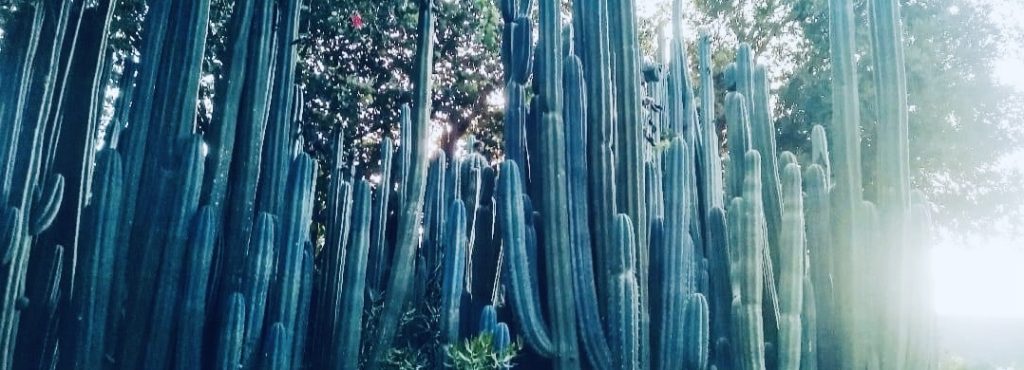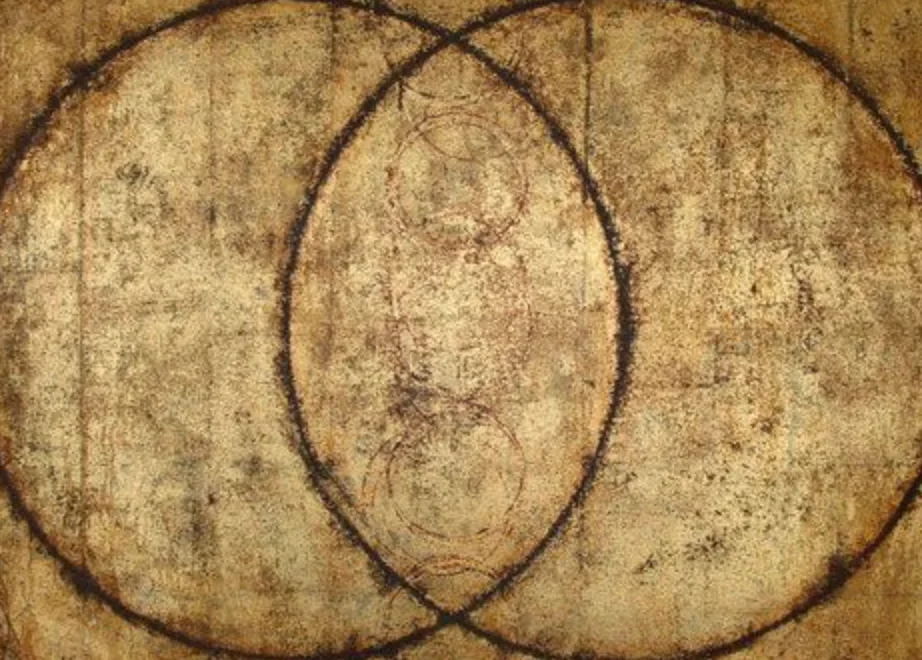A dear teacher of mine, Caroline Carey, shares a profound process called the Mandorla. At first glance it seems simple: two overlapping circles. Each circle represents a different truth, a polarity that exists in our lives. One may be light, the other dark. One may carry longing, the other resistance. One may be the self that feels safe in belonging, the other the self that stands apart.
The place where the circles overlap is the Mandorla — the almond-shaped middle ground. It is not about choosing one side over the other, but about daring to stand in the space between. Here, we can get to know both sides with curiosity, without having to reject or identify with just one.
Caroline teaches that through The Magic of Mandorla we gain profound clarity on our core wound. Rather than treating this wound as an enemy, we come to see it as an ally — a place of hidden power that, when embraced, reveals our unique gift and the contribution we are here to make.
It is known as the most powerful of (spiritual) religious experiences we can have in life. Mandorla is the place of poetry “And the fire and the rose are one.” T. S Eliot
An Ancient Symbol
The Mandorla (also known as the Vesica Piscis) is one of the most ancient sacred symbols known. Two circles overlap to form the almond-shaped space that represents divine union and the meeting of opposites: earth and sky, masculine and feminine, ego and soul, physical and spiritual. The two circles sit inside a larger one, representing total existence.
As Caroline reminds us, this is not abstract mysticism. It is a picture of our human task: to bridge spirit and matter, to live fully grounded in our bodies while also honouring the presence of soul.
Why the Middle Matters
When we step consciously into each circle, we can listen: What lives here? What voice wants to be heard? Each side carries its own stories, images, and sensations. By allowing them to express themselves, we begin to see more of the truth that lives in us.
But when we are not conscious of this movement, it is easy to get swept into extremes. We may cling to light while denying shadow, or become trapped in fear while forgetting possibility. The circles drift apart, and life feels polarised, split, or stuck.
The Mandorla reminds us there is another way: to pause in the overlap, to hold both truths at once, and to let something larger reveal itself.
✍️ A Mandorla Journaling Practice
Here’s a simple way to try the Mandorla as a creative exercise:
- Take a blank sheet of paper and draw two overlapping circles.
- Identify a polarity you feel in your life right now (e.g. freedom/security, belonging/exile, hope/fear).
- Step into the first circle. Write down words, images, or sensations that belong to this side. Let it speak freely.
- Step into the second circle and do the same — give voice to what lives there.
- Continue adding to each circle over days or even weeks, until both sides feel fully represented.
- Then move into the almond-shaped middle space — the Mandorla. Ask:
- What is needed for balance?
- What do these two sides want me to know?
- Capture what arises — whether in words, images, or symbols.
This practice helps us hold the tension of opposites with compassion, and often reveals new possibilities that neither side could see alone.
A Story: Thandi’s Mandorla
Thandi is a 32-year-old woman who often finds herself caught between two powerful forces. On one side, she longs for closeness. She watches friends laughing together, feels the ache of wanting to belong, and journals often about her dream of a deep, loving partnership.
On the other side, she fears connection. Whenever someone gets too close, she notices panic rising — a tightening in her chest, a voice whispering, “If they really knew me, they’d leave.” This fear leads her to pull away, even from people she cares about.
Living at these extremes is exhausting. Some weeks she pushes herself into social spaces, only to feel overwhelmed and withdraw. Other times she isolates for days, missing the very connection she longs for. It feels like she’s trapped in a loop.
When Thandi tries the Mandorla process, she draws two overlapping circles.
- Left Circle (Longing for Connection): She writes: “Warmth, laughter, safety, being seen.” She pastes in a magazine picture of two friends embracing. She notices a soft feeling in her chest when she lets herself imagine being included.
- Right Circle (Fearing Connection): She writes: “Danger, rejection, too much.” She sketches a shadowy figure and adds, “If they know me, I’ll lose them.” The sensation here is tightness in her stomach.
By spending time in each circle, Thandi begins to see that both sides have something to say. The longing protects her from loneliness. The fear protects her from being hurt. Neither is “wrong.”
Finally, she turns to the Mandorla — the almond-shaped space in the middle. She asks each side: “What is needed for balance?”
A new voice emerges: “I want to risk small steps. I don’t need to rush. I can let people in slowly, in ways that feel safe.”
This insight doesn’t erase the polarity — but it shows her a way forward that honours both truths. She can listen to her longing and respect her fear. She can experiment with small, safe connections, practising trust one step at a time.
In Caroline’s words, Thandi has begun to transform her core wound — the ache of disconnection — into the gift of compassionate presence with herself and others.
Closing Thought
At a time when our differences — of culture, politics, faith, or identity — threaten to divide us, the Mandorla offers a different possibility. It becomes not only a personal practice, but also a collective medicine: a way of building bridges where polarity seems insurmountable.
The polarity between opposites can be destructive, but it can also be powerfully generative. By stepping into the space between, we learn empathy, humility, and courage — qualities that ripple out into our relationships, communities, and the wider world.
The Mandorla is not about erasing differences or forcing harmony. It is about holding tension with compassion, listening to both sides of our inner life, and allowing something new to emerge. When we meet ourselves in the space between, we may find that what once felt like conflict becomes a doorway to transformation.

